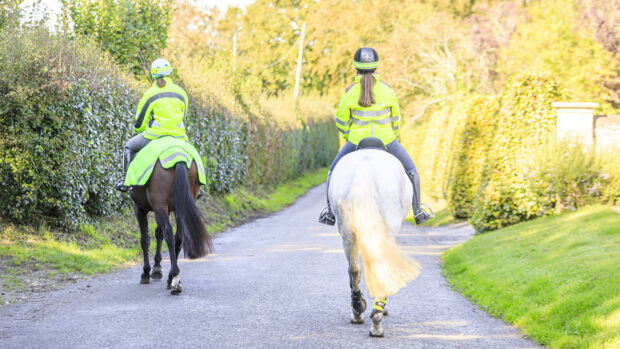Rider weight limits have come under the spotlight again as it is agreed multiple factors should be considered when matching horses and riders – and that weight discussions should be approached carefully with young people.
Last month the Swedish equestrian federation spoke out on the topic, following reports in the Swedish media. The federation does not recommend having weight limits at riding schools, for children or adults, “for the good of the horse and the person”, and that weight limits go against Sweden’s national sports confederation’s guidelines for children and youth sports.
The federation said horse welfare “must always be central”, but that matching horses and riders is more complex than rider weight, and should be based on factors including horse breed and size, the horse’s training, rider ability and the riding activity.
“It is important to consider this overall picture,” the federation’s secretary general Johan Fyrberg told H&H.
“Most people who ride at Swedish riding schools are young girls, a group where weight is often a sensitive subject. As a sport, we should not contribute to this issue, as we know that it could have serious consequences such as eating disorders or other psychological problems. We see that instructors can match rider and horse perfectly fine without publicly pointing out a rider’s weight.”
Mr Fyrberg added that the federation’s stance is “not new” and that most coaches “handle this very well”.
“However, after this subject was raised in a few newspapers, we chose to be extra explicit with our recommendations,” he said.
Rider weight has been increasingly discussed in the UK, and last year the suitably mounted working group was formed to tackle incompatible horse-rider combinations. Researcher Tamzin Furtado, one of the group’s founders, told H&H it is “excellent” to see the Swedish federation considering mental health.
“I agree that some ‘blanket’ weight limits can be misleading; for example, policies that say, ‘No riders over a certain weight can attend this riding school,’ can be less helpful than having individual limits per horse, which might be regularly reassessed,” she said, adding that horse-to-rider weight ratios are an “important, albeit complex welfare issue”.
“We have strong evidence that it can be detrimental to horses to carry a load heavier than is ideal for that individual, though this is affected by fitness, build, breed, age, tack and other factors.”
Ms Furtado said that for young riders “discussing weight is very sensitive”.
“We need to engage carefully with the issue alongside advice from mental health professionals and psychologists,” she said.
Pony Club chief executive Marcus Capel told H&H the organisation has discussed rider weight “at length over the years” and he supports the Swedish federation’s recommendations.
“We are aware how sensitive the issue of body image is for young people. We have been working with mental health charity Riders Minds to promote and support positive mental health in our young people,” he said.
Oonagh Meyer, British Horse Society head of operations for approved centres, told H&H that rider ability, horse size and training should always be considered. “Alongside this, in the interests of equine welfare and safety, our approved centres have a rider size and weight limit for each of their horses and ponies,” she said.
“Although a sensitive issue, it is vital that anyone understands that the proprietor has restrictions in recognition of a rider’s height and weight. The priority has to be the welfare of the horse.”
- Do you agree with the Swedish federation’s recommendations? Send your thoughts to hhletters@futurenet.com, including your name, and nearest town and county, for consideration for publication on our letters page.
You might also be interested in:

‘We applaud them’: new group set up to tackle the issue of oversized riders

‘Let’s keep this going’: awards for most harmonious horse and rider combinations at major show

Subscribe to Horse & Hound magazine today – and enjoy unlimited website access all year round
Horse & Hound magazine, out every Thursday, is packed with all the latest news and reports, as well as interviews, specials, nostalgia, vet and training advice. Subscribe today and enjoy the magazine delivered to your door every week, plus unlimited website access and digital versions of the magazine dating back to September 2012.




